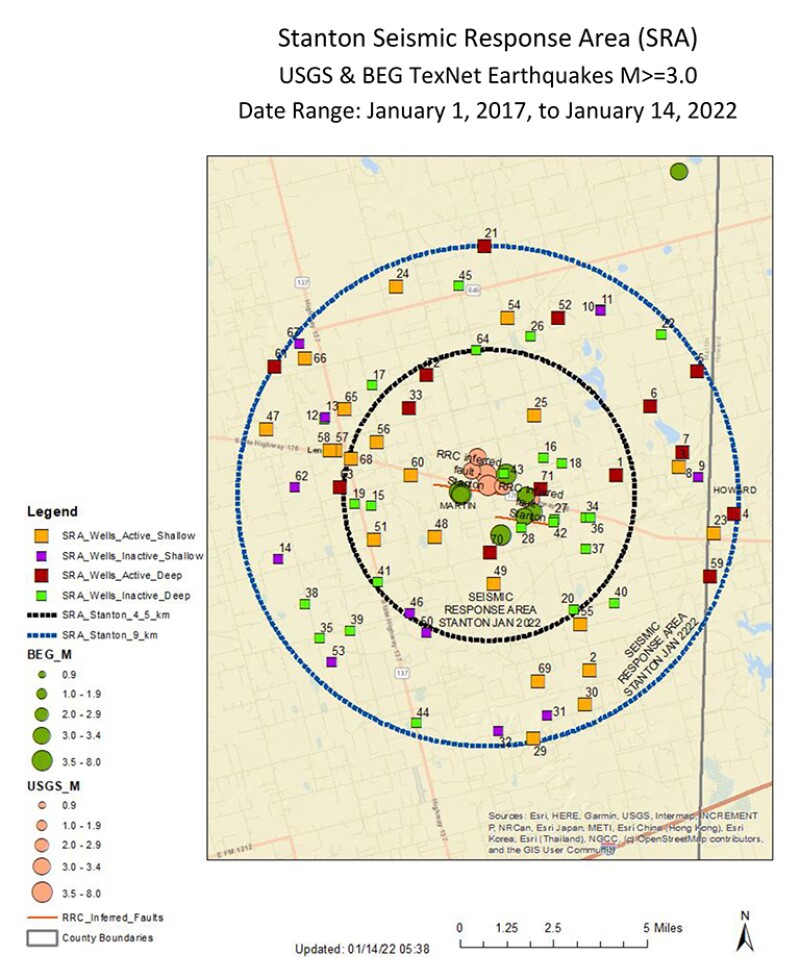The Texas Railroad Commission (RRC), the state’s regulatory body for the oil and gas industry, has designated a region around Stanton, Texas, as a Seismic Response Area (SRA) after a series of earthquakes shook the region.
The area in the Permian Basin is home to 72 saltwater-disposal (SWD) wells (Fig. 1). The RRC has connected these wells to several seismic events, including a 4.2 magnitude temblor on 31 December 2020 and one on 28 December 2021 that registered a magnitude of 4.6.

According to B3 Insights, a water-management data and analytics company, the Stanton SRA is permitted for 9.88 million B/D of water reinjection. Of the 72 injection wells in the SRA, 35 are active and handle approximately 273,000 B/D. Fourteen of those are deep wells that handle approximately 197,000 B/D. Six are less than 4 years old and account for approximately 220,000 B/D.
The deeper wells may be the problem, according to the RRC’s analysis of another SRA near Gardendale, Texas. “Although operators appear to be gravitating towards deep SWD injection especially due to the well-noted overpressured nature of the San Andres formation, the Texas RRC has attributed seismic activity in the Gardendale SRA to deep injection,” said Laura Capper, the president and CEO of CAP Resources, in a LinkedIn post.
With the designation of the Stanton SRA, operators in the region have 90 days to come up with a solution. Solutions for produced salt water beyond reinjection include recycling and trucking or piping to other areas for storage.
“We expect persistent seismic activity in the region to escalate demand for nearby commercial and noncommercial recycling facilities,” Capper wrote.
The RRC considers a response plan to be successful if no earthquakes of 3.5 magnitude or greater are recorded in the 18 months after the plan is put in place. The RRC said it will keep an eye on the area through public data and that it is prepared to implement its own seismic action plan if the industry does not present a coordinated response.


